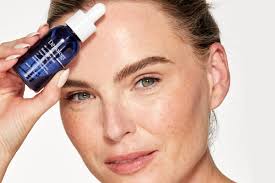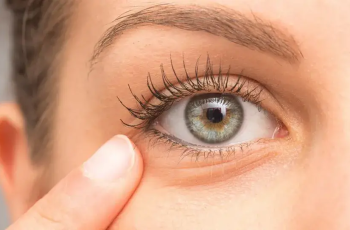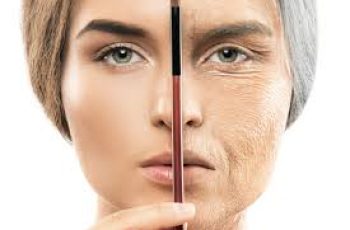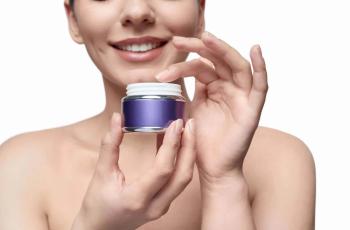
.webp)
.webp)
.webp)
Can You Use Niacinamide and Matrixyl at the Same Time?
.webp)
.webp)
In the ever-evolving world of skincare, it can be tricky to keep up with all the new ingredients gaining popularity. One such rising star is Matrixyl, a powerful peptide complex making headlines.
.webp)
.webp)
.webp)
If you’re wondering whether Matrixyl can be used alongside another skincare favorite—Niacinamide—you’re not alone. This question pops up a lot in the beauty community.
.webp)
.webp)
Let’s explore both ingredients in detail and uncover whether they’re a good match. By the end of this article, you’ll know how to use them safely and effectively in your routine.
.webp)
.webp)
.webp)
What Is Matrixyl?
.webp)
.webp)
Matrixyl is a trademarked peptide ingredient known for its powerful anti-aging properties. It’s made up of two peptides: Palmitoyl Tripeptide-1 and Palmitoyl Tetrapeptide-7.
.webp)
.webp)
.webp)
These peptides are synthetic, meaning they’re lab-made but designed to mimic natural compounds that support skin health. Their main job? Stimulate collagen and elastin production.
.webp)
.webp)
As we age, collagen—the protein that keeps skin firm—begins to break down. Most people start losing about 1% of their collagen every year after their mid-20s.
.webp)
.webp)
.webp)
Matrixyl helps reverse that decline by encouraging your skin to produce more collagen, elastin, and even hyaluronic acid. This results in firmer, plumper, and more youthful-looking skin.
.webp)
.webp)
It’s especially popular in serums and moisturizers targeted at reducing fine lines, wrinkles, and sagging. The best part? Matrixyl is gentle and suitable for almost all skin types.
.webp)
.webp)
.webp)
What Is Niacinamide?
.webp)
.webp)
Niacinamide, also known as vitamin B3, is one of the most versatile skincare ingredients out there. It benefits nearly every skin type, even sensitive or acne-prone skin.
.webp)
.webp)
.webp)
Its primary function is to strengthen the skin barrier by locking in moisture and preventing water loss. But its benefits don’t stop there.
.webp)
.webp)
Niacinamide also helps regulate sebum (oil) production, making it a fantastic option for oily and acne-prone skin. It can calm inflammation and reduce the appearance of enlarged pores.
.webp)
.webp)
.webp)
What’s more, niacinamide has brightening properties and can help fade dark spots, post-acne marks, and uneven skin tone over time.
.webp)
.webp)
Simply put, niacinamide is a powerhouse ingredient that supports skin health from every angle. It’s often found in toners, serums, creams, and even cleansers.
.webp)
.webp)
.webp)
Can You Use Niacinamide and Matrixyl Together?
.webp)
.webp)
Yes, you can absolutely use niacinamide and Matrixyl at the same time. These two ingredients complement each other beautifully without causing irritation or interference.
.webp)
.webp)
.webp)
Since Matrixyl helps build skin structure and stimulate collagen, and niacinamide strengthens the skin barrier and regulates oil, they work on different but synergistic levels.
.webp)
.webp)
Together, they improve your skin’s hydration, texture, firmness, and tone. Both are gentle, so using them in the same routine is typically well tolerated—even by sensitive skin.
.webp)
.webp)
.webp)
You can apply them back-to-back or look for a product that includes both in one formula. If layering, apply the lighter serum first and follow with the heavier one.
.webp)
.webp)
What Should You Avoid Mixing with Matrixyl?
.webp)
.webp)
.webp)
While Matrixyl is generally considered safe and non-irritating, there are a few ingredients it doesn’t play well with. Here’s what to be cautious about.
.webp)
.webp)
Avoid mixing Matrixyl with acids and strong actives like:
.webp)
.webp)
.webp)
L-ascorbic acid (Vitamin C)
.webp)
.webp)
Alpha Hydroxy Acids (AHAs) like glycolic acid
.webp)
.webp)
.webp)
Beta Hydroxy Acids (BHAs) like salicylic acid
.webp)
.webp)
Using these potent ingredients with Matrixyl can increase your risk of over-exfoliation. This may lead to redness, dryness, and irritation, especially for sensitive skin.
.webp)
.webp)
.webp)
Matrixyl, while not technically an exfoliant, increases skin cell turnover in a way similar to retinol. Combining it with acids may disrupt your skin’s pH and barrier.
.webp)
.webp)
If you want to use acids in your routine, apply them in the evening and Matrixyl on alternate nights. Or, use acids in the morning and Matrixyl at night, depending on tolerance.
.webp)
.webp)
.webp)
Can You Use Matrixyl and Hyaluronic Acid Together?
.webp)
.webp)
Absolutely! Matrixyl and hyaluronic acid are an ideal duo for deep hydration and plumping. In fact, many skincare brands combine these two in anti-aging serums.
.webp)
Hyaluronic acid holds up to 1,000 times its weight in water, drawing moisture into the skin. Matrixyl boosts your skin’s natural hyaluronic acid and collagen levels.
Together, they strengthen the skin barrier, reduce fine lines, and improve elasticity. This combination is especially helpful during winter or in dry climates.
Apply hyaluronic acid first, while your skin is slightly damp, and then layer Matrixyl over it to seal in moisture and enhance collagen production.
Can You Use Matrixyl and Retinol Together?
Technically, yes—but with caution. Both ingredients stimulate skin renewal, so layering them can increase your chances of irritation.
Retinol is a powerful derivative of vitamin A. It speeds up cell turnover and helps with wrinkles, acne, and texture. Matrixyl does something similar, but more gently.
Using both at once might overwhelm your skin, leading to redness, flaking, or dryness. For sensitive skin, this can be too much stimulation.
If you want the benefits of both, alternate days is your best bet. Use Matrixyl one night and retinol the next to give your skin a chance to adjust and recover.
And don’t forget sunscreen! Both Matrixyl and retinol make your skin more vulnerable to sun damage. A daily SPF of 30 or higher is essential.
Can You Use Matrixyl Around the Eyes?
Yes, Matrixyl is safe and effective for the delicate eye area. In fact, many eye creams are formulated with Matrixyl to reduce signs of aging.
The skin under your eyes is thinner and more prone to fine lines, puffiness, and dehydration. Matrixyl helps by increasing hydration and stimulating collagen production.
It’s great for minimizing crow’s feet, undereye bags, and dark circles caused by thin skin or fluid retention.
Apply a pea-sized amount to your ring finger and gently tap around the orbital bone. Avoid rubbing or pulling, as this can lead to premature wrinkles.
Can You Mix Niacinamide with Peptides Like Matrixyl?
Yes, mixing niacinamide with peptides like Matrixyl is not only safe—it’s highly beneficial. They work together to strengthen your skin’s barrier and resilience.
Niacinamide keeps your skin hydrated and reduces inflammation, while peptides support structural proteins like collagen and elastin.
Together, they enhance the skin’s ability to defend against free radicals, pollution, and other environmental stressors that lead to premature aging.
You can use separate products or choose a multi-ingredient serum that contains both. There’s no risk of conflict between these ingredients.
How to Add Niacinamide and Matrixyl to Your Routine
If you’re new to both ingredients, start slowly and introduce one at a time. Here’s how you can safely build them into your skincare regimen.
Step 1: Cleanse
Start with a gentle, hydrating cleanser to remove dirt, oil, and makeup without stripping your skin.
Step 2: Apply Niacinamide
Use a niacinamide serum after cleansing. This allows it to absorb properly and start calming the skin.
Step 3: Apply Matrixyl
Once the niacinamide is absorbed, layer Matrixyl over it. If you’re using a serum, press it gently into the skin with clean hands.
Step 4: Moisturize
Seal everything in with a moisturizer that suits your skin type. Look for one with ceramides or hyaluronic acid for extra hydration.
Step 5: Protect with SPF (AM only)
In your morning routine, always finish with sunscreen. This prevents further damage and allows your actives to work more effectively.
Final Thoughts: Should You Use Matrixyl and Niacinamide Together?
Yes—Matrixyl and niacinamide are a skincare dream team. When used together, they provide firming, hydrating, and calming benefits for almost every skin type.
They don’t conflict, they’re both gentle, and they support each other in enhancing the skin barrier, improving texture, and fighting signs of aging.
As with any new routine, patch test first and introduce ingredients slowly. For personalized advice, it’s always smart to speak with a dermatologist.
Have questions or want to share your results? Join the conversation on our Instagram page @Procoal. We’d love to hear from you!



